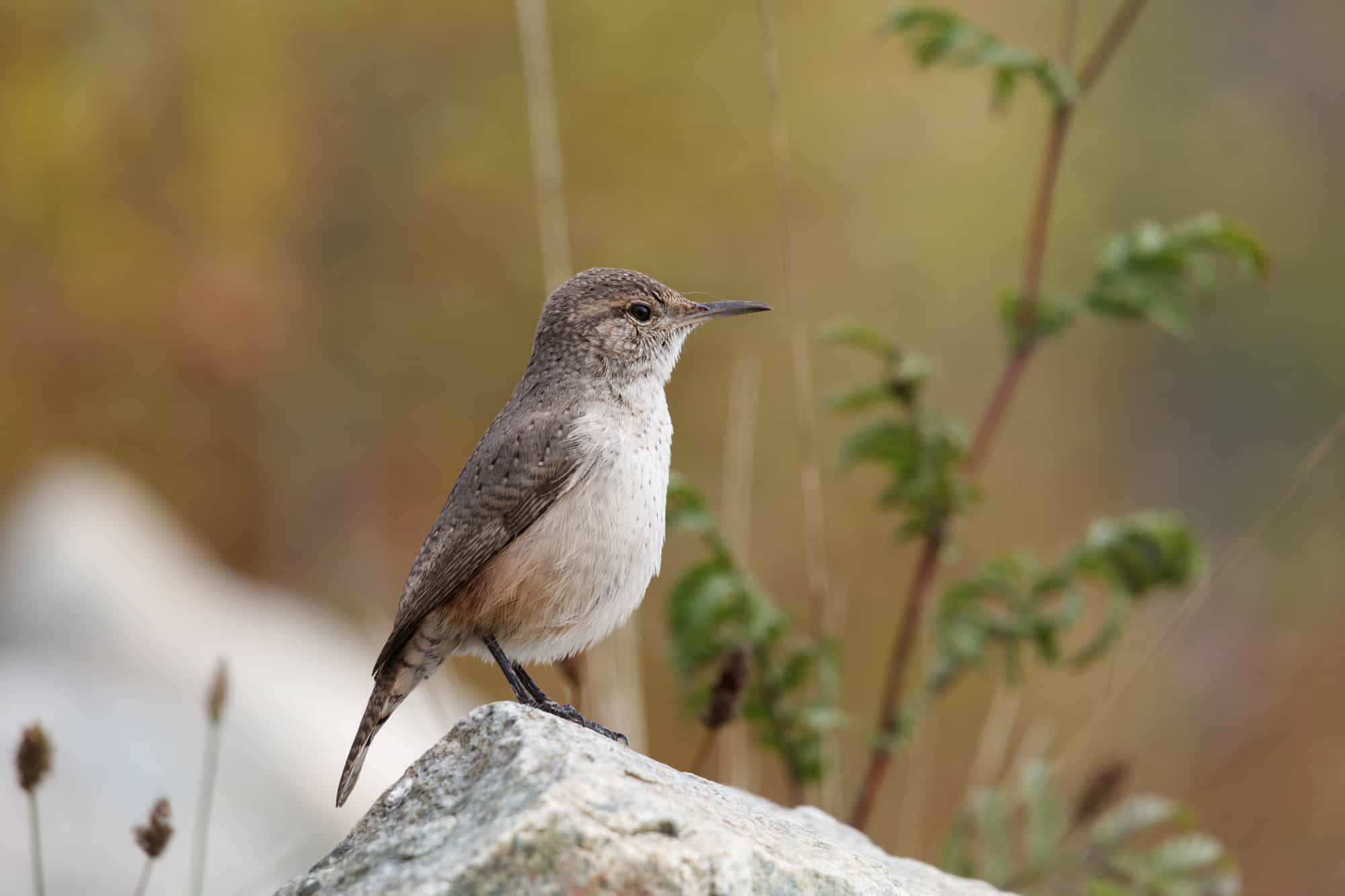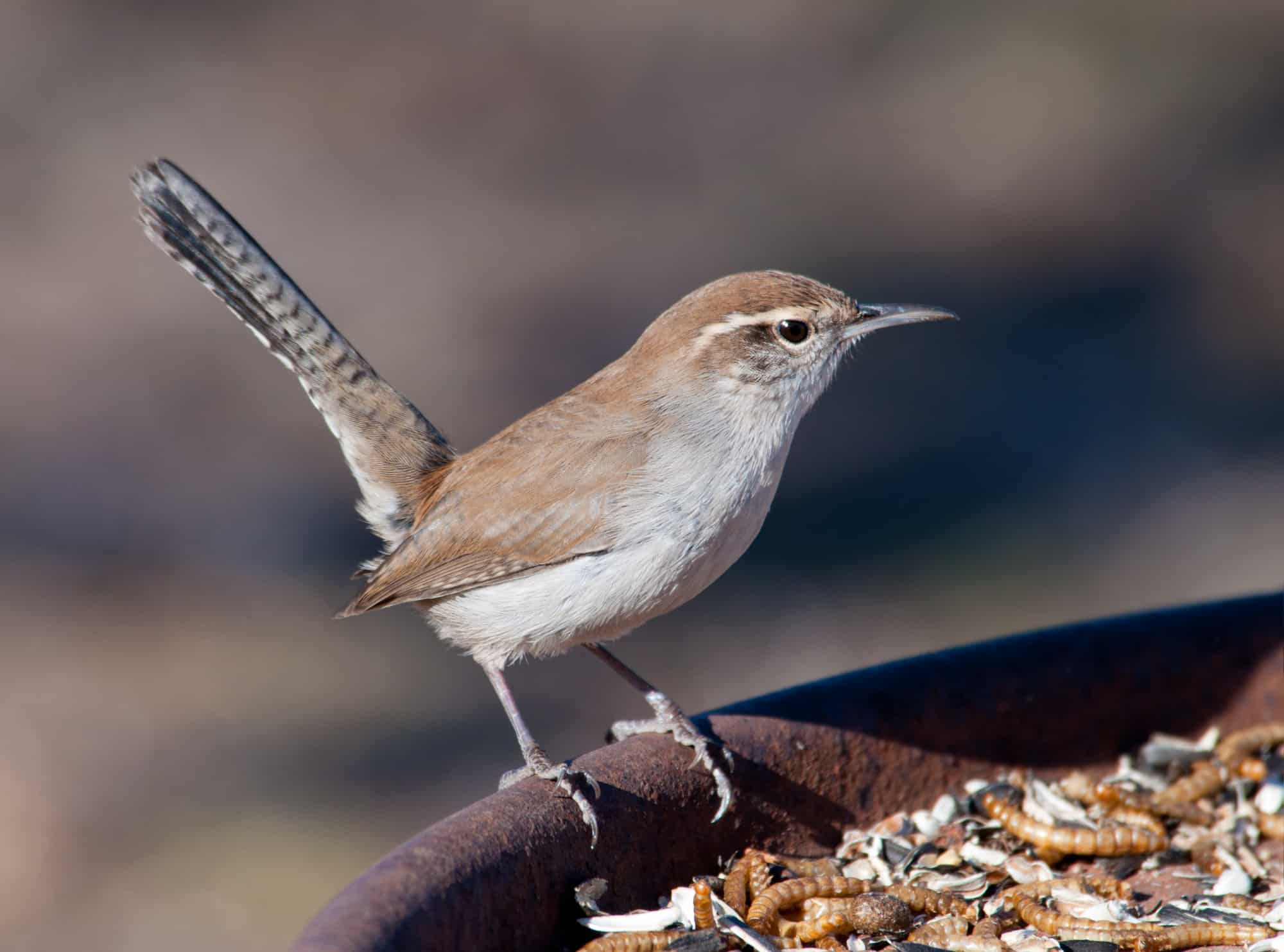Maryland might be the eighth smallest state by land mass in the United States, but its varied landscapes of sand dunes, marshlands, forests, and mountains have earned it the nickname ‘America in Miniature’.
The diverse topography of Maryland provides a multitude of habitats for its bird species, and according to official records at the Maryland Ornithological Society, the state boasts an impressive 455 bird species.
Seven of those species are wrens, and while some of them are very rare here, the most common among them can be seen every day.
With their tiny bodies and huge personalities, wrens are birds that delight bird enthusiasts across America.
Although some species can weigh less than two credit cards, the energy with which they scuttle around and belt out their exuberant songs can seem nothing short of miraculous.
But exactly which species can be seen in Maryland, and how can residents encourage these enchanting birds to visit their backyards? Let’s take a closer look at Maryland’s wrens.
Wrens in Maryland, Starting With the Most Common
Carolina Wren

- Scientific Name: Thryothorus ludovicianus
- Length: 4.7-5.5 in (12-14 cm)
- Weight: 0.6-0.8 oz (18-22 g)
- Wingspan: 9 in (23 cm)
The sedentary Carolina wren is the most common wren in the East and can be found from Eastern Mexico to Maine. Amazingly, they’re reported on close to half of all birdwatchers’ reports during the summer and winter here.
Beautiful little birds, Carolina wrens have long white eyebrows, a white throat, and a pinkish breast. With a wingspan of 9 inches, they’re also one of the largest wrens in North America.
You can attract Carolina wrens to breed in your backyard by offering them an appropriate nestbox. They may also occasionally accept food at platform bird feeders and tube feeders during the winter, too!
Interestingly, Carolina wrens are monogamous and can stay faithful to one partner for their entire lives. The female will sometimes respond approvingly to the male’s repetitive song with warm, buzzy chatter!
House Wren

- Scientific Name: Troglodytes aedon
- Length: 4.3-5.1 in (11-13 cm)
- Weight: 0.3-0.4 oz (10-12 g)
- Wingspan: 5.9 in (15 cm)
House wrens are the second most commonly seen wren in Maryland but can only be seen in The Free State during the warmer months. It’s at this time of the year that they’re looking for nesting sites, and will readily take up residence in a suitable nest box such as a gourd bird house.
Much slimmer and slighter than the Carolina wren, house wrens only weigh about as much as a plastic pen. Their entire body is different shades of brown and gray, with subtle barring on their wings and tail.
House wrens don’t visit backyard feeders, but you can still ensure there are plenty of insects for them to eat by avoiding pesticides and leaving some weedy corners in your garden for them to forage about in.
Interestingly, house wrens can be found throughout South America too, where they remain more sedentary. Their massive distribution makes them the most widespread native bird in all the Americas!
Winter Wren

- Scientific Name: Troglodytes hiemalis
- Length: 3.1-4.7 in (8-12 cm)
- Weight: 0.3-0.4 oz (8-12 g)
- Wingspan: 4.7-6.3 in (12-16 cm)
Occurring in the reverse migratory pattern to the house wren, winter wrens are only regularly spotted in Maryland during the winter. In the summer, these small but spirited birds fly north for breeding, with a range that extends all the way to The Hudson Bay.
Winter wrens share the joint honor of being the smallest wren in North America with their western cousin the Pacific wren. The two species are so similar that until recently they were thought to be identical!
Your best chance of spotting winter wrens is among the undergrowth in damp, shady areas, especially near streams and waterways. Look out for these cheerful, energetic birds hopping around on fallen branches and tree stumps looking for insects and other invertebrates to eat.
Winter wrens will also sometimes visit backyards, and residents of Maryland can improve their chances of seeing them by leaving up their nest boxes over the winter. The normally solitary winter wren is famous for congregating in cavities to stay warm during cold nights!
Marsh Wren

- Scientific Name: Cistothorus palustris
- Length: 3.9-5.5 in (10-14 cm)
- Weight: 0.3-0.5 oz (9-14 g)
- Wingspan: 5.9 in (15 cm)
Whereas our first few wrens can be seen in backyards, you’ll probably need to go on a dedicated birdwatching trip to see the marsh wren in Maryland. These shy birds are so faithful to their wetland habitats, they’re rarely seen anywhere where there’s no standing water.
These secretive birds are so difficult to see among the wetland vegetation, that a good pair of binoculars and an attentive ear are essential companions for observing marsh wrens.
Listening out for their assertive songs and calls is the best way to locate marsh wrens. They are well known for fighting among themselves and other birds, and will sometimes destroy their rivals’ nests!
The marsh wren’s territorial antics are especially pronounced during breeding time, and the Mid-Atlantic Coast is one of the few regions where you can see these birds year-round.
Sedge Wren

- Scientific Name: Cistothorus stellaris
- Length: 3.9-4.7 in (10-12 cm)
- Weight: 0.3oz (7-10 g)
- Wingspan: 4.7-5.5 in (12-14 cm)
A close relative of the marsh wren is the sedge wren. They’re much rarer than marsh wrens though, and are seldom seen in the mid-north Atlantic coast region. In Maryland, they’re only reported by about one in a thousand bird watchers.
Apart from being noticeably smaller, a key difference between the marsh wren and sedge wren is that sedge wrens occupy slightly drier habitats than their cousins.
Whereas marsh wrens reside almost exclusively among vegetation in standing water, sedge wrens are happy in the upper edges of a wetland, or even in damp fields.
To improve your chances of identifying a sedge wren, listen out for their sharp calls when they’re flushed out of their sedge grass habitats.
Rock Wren

- Scientific Name: Salpinctes obsoletus
- Length: 4.9-5.9 in (12.5-15 cm)
- Weight: 0.5-0.6 oz (15-18 g)
- Wingspan: 8.7-9.4 in (22-24 cm)
Rock wrens are one of the rarer wrens in North America, and their populations are normally confined to The West, so it’d certainly be surprising to see one in Maryland.
These migratory birds do drift around, though, and can be seen from Central America to Alaska. Once in a blue moon, they’ll show up on the East Coast and are reported in Maryland every few years or so.
These larger wrens have a light grayish color, a speckled chest, and a long bill. They’re often seen bouncing up and down while singing from the top of a rock or boulder.
Bewick’s Wren

- Scientific Name: Thryomanes bewickii
- Length: 5.1 in (13 cm)
- Weight: 0.3-0.4 oz (8-12 g)
- Wingspan: 7 in (17.8cm)
While Bewick’s wren remains a common bird in the Southwestern United States, their eastern populations have plummeted over the last several decades.
It’s not known exactly why Bewick’s wrens are rarer than they once were, but it’s thought that competition from house wrens, and habitat loss has contributed to their dramatic decline.
Bewick’s wren would have once been seen more often in Maryland, but we may now have to consider them temporarily extinct here. There haven’t been any reliable sightings since 1993.
This is sad because Bewick’s wrens are very pretty little birds with white eyebrows, a light gray belly, and a long tail that is often flicked and fanned to reveal its white corners.
Perhaps conservation efforts will one day see them return to the East!
Conclusion
Seven species of wren have been recorded in Maryland over the last few decades.
Although the rarest few are seldom seen here, Carolina wrens and house wrens remain a regular sight in woodland edges and backyards across the state.
Apart from wrens, there are more than 400 other species of bird in Maryland. We’ve whittled them down to the 25 most iconic species, in our Birdwatcher’s Guide The Free State.

